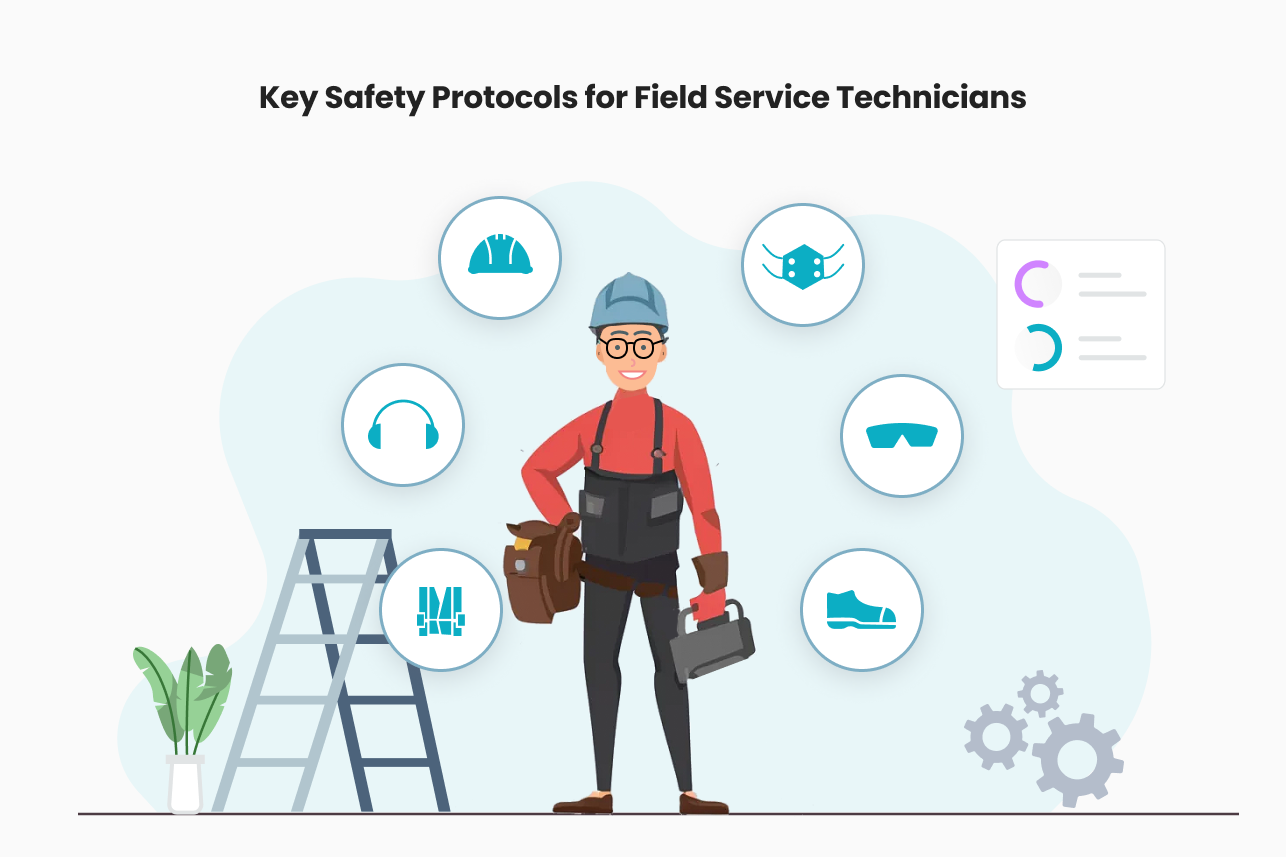Field service technicians play a crucial role in maintaining and repairing equipment, machinery, and systems across various industries. Ensuring their safety is paramount, given the often hazardous environments they work in. Adhering to key safety protocols not only protects the technicians but also enhances overall operational efficiency and reliability. Here are some essential safety protocols that field service technicians must follow.
1. Personal Protective Equipment (PPE)
Personal Protective Equipment (PPE) is the first line of defense for field service technicians. Depending on the nature of the job, technicians should wear appropriate PPE, which may include:
– Helmets: To protect against head injuries from falling objects.
– Gloves: For hand protection against cuts, burns, and chemical exposure.
– Safety glasses or goggles: To shield the eyes from debris, dust, and chemical splashes.
– Steel-toed boots: To prevent foot injuries from heavy objects.
– Hearing protection: In noisy environments to prevent hearing loss.
– Respirators: In areas with poor air quality or where hazardous substances are present.
2. Proper Training and Certification
Proper training and certification are crucial for field service technicians to perform their tasks safely. This includes:
– Initial Training: Comprehensive training on the specific equipment and systems they will be working with.
– Ongoing Education: Regular updates and refreshers on safety protocols, new technologies, and best practices.
– Certification: Ensuring technicians are certified in areas such as electrical safety, hazardous materials handling, and first aid.
3. Risk Assessment and Hazard Identification
Before starting any job, field service technicians must conduct a thorough risk assessment. This involves:
– Identifying Potential Hazards: Recognizing any physical, chemical, biological, or ergonomic hazards in the work environment.
– Evaluating Risks: Assessing the likelihood and severity of potential accidents or injuries.
– Implementing Control Measures: Putting in place measures to mitigate identified risks, such as using protective barriers, securing loose objects, and ensuring proper ventilation.
4. Adherence to Safety Regulations and Standards
Field service technicians must comply with relevant safety regulations and standards, such as those set by the Occupational Safety and Health Administration (OSHA) in the USA, the Health and Safety Executive (HSE) in the UK, and the South African Bureau of Standards (SABS) in South Africa. Compliance includes:
– Following Safety Guidelines: Adhering to the safety protocols outlined by these organizations.
– Regular Audits and Inspections: Participating in routine safety audits and inspections to ensure ongoing compliance.
– Documentation: Keeping accurate records of safety procedures, incidents, and training activities.
5. Safe Use of Tools and Equipment
Proper handling and maintenance of tools and equipment are vital for technician safety. This includes:
– Regular Inspections: Checking tools and equipment for any signs of wear, damage, or malfunction before use.
– Proper Use: Using tools and equipment as intended and following manufacturer guidelines.
– Maintenance and Repairs: Ensuring all tools and equipment are regularly maintained and promptly repaired or replaced if necessary.
6. Ergonomics and Safe Lifting Techniques
Field service technicians often perform physically demanding tasks, making ergonomics and safe lifting techniques critical. This involves:
– Correct Posture: Maintaining proper posture to reduce strain on the back and joints.
– Safe Lifting: Using the correct lifting techniques, such as bending at the knees and keeping the load close to the body.
– Assistive Devices: Using tools like dollies, lifts, and hoists to move heavy objects safely.
7. Electrical Safety
For technicians working with electrical systems, adhering to electrical safety protocols is essential. This includes:
– Lockout/Tagout Procedures: Ensuring equipment is properly shut off and tagged before performing any maintenance.
– Avoiding Live Work: Whenever possible, avoiding working on live electrical circuits and ensuring the power is off.
– Using Insulated Tools: Utilizing tools designed to provide insulation against electrical currents.
8. Emergency Preparedness
Being prepared for emergencies can save lives. Field service technicians should be familiar with:
– Emergency Procedures: Knowing the steps to take in case of fire, chemical spills, or other emergencies.
– First Aid: Having basic first aid training to provide immediate assistance in case of injuries.
– Emergency Contacts: Keeping a list of emergency contacts readily accessible, including local emergency services and company safety officers.
9. Communication and Reporting
Effective communication is key to maintaining safety in the field. This involves:
– Reporting Hazards: Promptly reporting any safety hazards or incidents to supervisors.
– Team Communication: Staying in constant communication with team members, especially when working in hazardous conditions.
– Documentation: Keeping detailed records of safety checks, incidents, and corrective actions taken.
10. Mental and Physical Well-being
The well-being of field service technicians is crucial for maintaining safety. This includes:
– Rest and Breaks: Ensuring technicians take regular breaks to avoid fatigue.
– Mental Health: Providing support for mental health issues, including stress management and counseling services.
– Hydration and Nutrition: Encouraging proper hydration and nutrition to maintain energy levels and overall health.
By adhering to these key safety protocols, field service technicians can minimize risks, enhance their performance, and ensure a safer working environment. This not only protects the technicians but also contributes to the reliability and efficiency of the services they provide.
